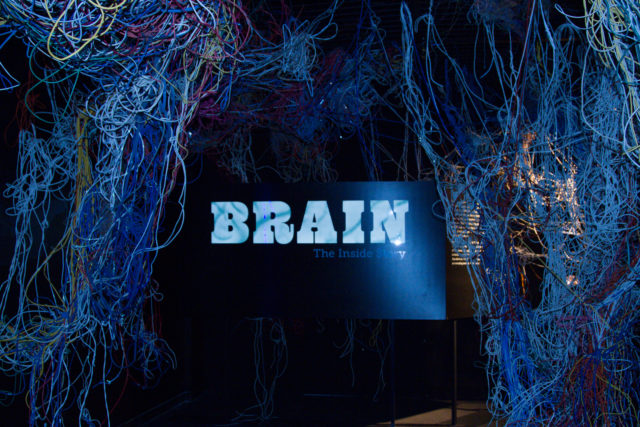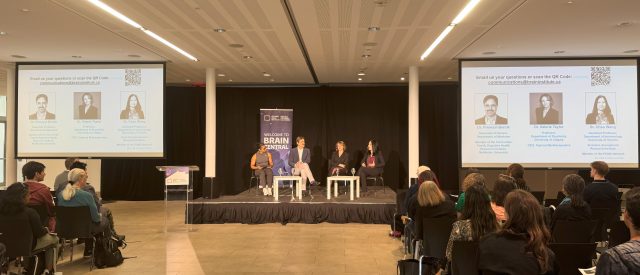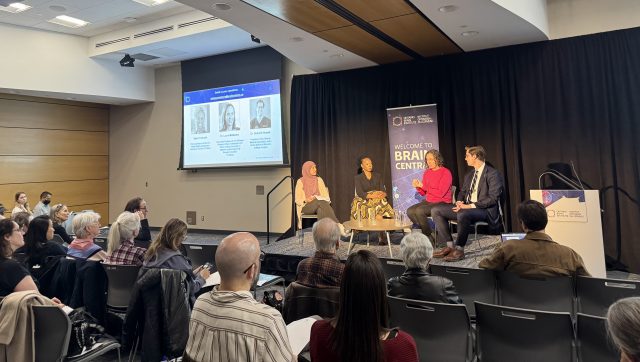There are a lot of folktales, sayings and “common sense” statements surrounding the topic of brain health. These statements or blurbs can be a one-liner heard on the news, a topic discussed on the radio, or even a meme on the internet. For example, “we only use 10% of our brains” is a fairly prevalent phrase – it was even the premise of the 2014 box office movie hit “Lucy.” In the movie, Morgan Freeman states, “It is estimated most human beings use only 10 %of the brain’s capacity… imagine if we could access 100%.” In fact, there is no scientific evidence to suggest that 90% of the human brain is unused. What would be a more accurate statement is that we actually have little understanding of how our brains work.
There are several “Brain Myth” blogs out there, many of which do a great job of uncovering the basis of why some of these common beliefs persist. The focus of this article is to explore some prevalent neuroscience myths relating to specific brain disorders which are the primary focus of the Ontario Brain Institute (OBI). For more information on our OBI research programs, see
here. OBI fosters multidisciplinary collaboration between different groups, such as scientists, clinicians, industry representatives, and patient advocacy groups, in order to try and improve brain health outcomes for individuals. The research programs at OBI study five types of brain disorders: depression, neurodegenerative disorders, epilepsy, neurodevelopmental disorders and cerebral palsy. Below, we discuss some common myths and misconceptions surrounding these particular brain disorders.
1. Brain Fact or Fiction?
Depression is a simple disorder – and can be easily treated with antidepressants
Depression is a complex disorder, with many contributing factors. What one person experiences with depression may be very different from what another individual reports. Treatment regimens for depression are very much based on the individual and on a variety of factors, such as the severity of depression symptoms. For instance, antidepressants will not necessarily be helpful to all individuals living with depression. For some individuals, psychotherapy may be helpful, while for others, a combination of both medication and psychotherapy may work best. A more novel treatment for depression, is
repetitive transcranial magnetic stimulation (rTMS), which uses magnetic field pulses to target brain regions directly. Effective treatment really depends on the person/their situation. Trying to predict which treatment will work best for each person is the goal of OBI’s research program in depression, the
Canadian Biomarker Integrated Network in Depression (CAN-BIND). Predicting the right treatment could help people suffering from depression to help improve their symptoms more quickly than by a trial-and-error approach.
2. Brain Fact or Fiction?
Alzheimer’s disease is caused by common things in our environment, such as aluminum or aspartame
Understanding the “why” of Alzheimer’s is a work in progress – scientists are really not sure of the exact mechanism by which the disease develops. Alzheimer’s disease is a progressive neurodegenerative disease where memory and other cognitive functions are diminished. It is likely that a combination of different genetic and environmental factors contribute to the onset of the disease. However, there is a lack of support and evidence to support that the use of common items such as aluminum tin foil are a major contributing factor to the onset of Alzheimer’s disease.
3. Brain Fact or Fiction?
If you have epilepsy, it is a disease you were born with.
Epilepsy is a neurological disorder, where nerve cell activity in the brain becomes disrupted resulting in seizures. Although many diseases have some sort of genetic component, genetic factors have not been reported to be one of the major causes of epilepsy. Anyone can develop epilepsy at any time – some individuals are born with epilepsy, while others may experience the onset of epilepsy at a much a later stage in their lives, or for instance, after a head injury or brain surgery. For the majority of individuals, the cause of epilepsy is currently unknown. To learn more, you can check out the different types of research projects being conducted by OBI’s
Epilepsy Research Program, EpLink.
4. Brain Fact or Fiction?
Strokes only occur in the elderly
Stroke is a serious and sudden occurrence, where the blood supply to your brain is disrupted, resulting in oxygen deprivation. It is a common misconception that strokes only affect older adults. Infants and children can also be affected by stroke, and can suffer debilitating, lifelong consequences – one being the development of a condition called cerebral palsy. The risk of stroke is highest in the first year of life, and occurs in about one in every 4000 births. Children and infants that have a stroke have between 50-80% chances of developing neurological impairments.
Cerebral palsy is caused by damage to the region of the brain that regulates muscle movement; “cerebral” means relating to the brain and “palsy” means paralysis, or tremors. Children with cerebral palsy have movement difficulties that vary in severity – often their whole body movement is affected – they can have trouble walking, and difficulty coordinating hand and arm movements. These children may need the aid of a leg brace, cane or a wheelchair. OBI is facilitating collaboration among different groups in order to understand causes and risk factors of CP, as well as to come up with ways to improve quality of life of children with cerebral palsy. Find out more about the cerebral palsy program, CP-NET
here.
5. Brain Fact or Fiction?
Sugar causes hyperactivity in children, and is a contributing factor to the development of Attention Deficit Hyperactivity Disorder (ADHD)
The phrases “no sugar before bedtime” or “don’t feed him/her too much sugar – sugar high!” are no doubt common exclamations at children’s birthday parties, or even instructions for the babysitters of young children everywhere. The scientific jury is still out on this one, but the findings from studies investigating sugar and hyperactivity are mixed at best. The link between sugar and increased energy/hyperactivity became popular in the early 1970’s. However, several studies conducted over the years provide no concrete evidence that there is a direct link between sugar consumption and being hyper. In fact, according to the National Institutes of Mental Health, we’ve known since 1982 that there is no direct link between sugar consumption and hyperactivity, let alone attention deficit hyperactivity disorder (ADHD). It has been speculated that parents tend to over-report active behavior when they believe their children have consumed sugar, when actually, their level of energy is no different than prior to ingestion. This doesn’t mean it should be a free-for-all in terms of feeding children candy and cake. Too much sugar can have other harmful effects, such as the development of cavities, or increased weight/obesity. ADHD is a complex and serious condition, which is still currently being studies, along with other neurodevelopmental disorders – to get some background on them, here is some
more information.
Overall, there is still so much that we do not know or understand about the brain and sometimes there is no clear-cut answer as to whether a statement about this complex organ is true or false. It’s really up to us to “use our brainpower” to evaluate whether what we hear has enough support to be implemented in our lives.
Myths and misconceptions can be perpetuated by the fact that in some cases, scientists still don’t have the answer. What causes epilepsy or ADHD? Why are some individuals more susceptible to depression than others? Will there be improved treatment for cerebral palsy? Are there proven preventative measures for diseases like Alzheimer’s and Parkinson’s? There remains a great deal of research to be conducted in order to answer these types of pressing questions.
Keep in mind, not everything out there is “science fiction” – a lot of great neuroscience research is being conducted in Ontario, and that has the potential to impact patient lives. In many instances, science can help us improve our quality of life – for example, an OBI report found that people who exercise regularly are 30-40% less likely to develop dementia (like Alzheimer’s disease) and 25% less likely to have a stroke – read more here. To learn more about Alzheimer’s disease, and other neurodegenerative disorders, visit the Ontario Neurodegenerative Disease Research Initiative. Hopefully, with substantiated findings like these, more and more “neuromyths” can be put to rest, and we can improve brain health.
By Nabilah Chowdhury, OBI Intern, Research



